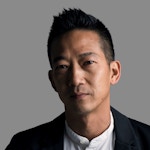Design Considerations and the Complex Facade
Kolon Future Research Park
Sign in and Register
Create an Account
Overview
Abstract
The design of complex, high-performance facades involves balancing attention towards principles of material selection, thermal and moisture protection, structural integrity, and durability. When these demands are coupled with the desire to create aesthetically interesting and “beautiful” skins, design teams may find themselves tasked with reconciling conflicting formal and performative drivers in the creation of an exterior envelope. The formal vision of a complex facade skin, for example, may not be appropriate for the climatic and site-specific realities of a given project location; material properties, compatibility, and interface will also often pose issues of concern. Technical designers will typically negotiate these challenges within the detailing of a given system. However, through the research and interrogation of given systems earlier in the design process, disparities between design considerations and technical drivers can lead to unexpected and innovative solutions.
This paper will present design and fabrication processes employed in the development of a high-performance complex facade for Kolon Future Research Park, a research laboratory building in Seoul, South Korea. The main facade of the building has been designed with the intention to serve as visually-striking, exemplary construct demonstrating the client’s commitment to innovation, technology, and sustainability. To achieve this design, a second skin of composite construction was developed using parametric design workflows and building performance analysis. Fiber reinforced polymer (FRP) was selected as the final material for the external sunshades, given the material’s durability, structural characteristics, and potential for plasticity in form. A monocoque sunshade assembly that challenges conventional formal notions of solar shading was developed for the project. The resultant body of the continuous outer skin is reflected in the glazed wall behind, to create visual complexity and tension amplified by the sense of weightlessness that the minimal support structure affords.
Authors

Stan Su
Morphosis Architects
s.su@morphosis.net
Keywords
Introduction
Kolon Future Research Park (Fig. 1) represents an investigation into the use of FRP in a bespoke, high-performance façade of complex geometry. The formal exploration and design of a bespoke
Access Restricted
Background
Kolon Future Research Park is the new 76,300 m² R&D laboratory building for the Kolon Group, a leading textile manufacturer in South Korea. The corporation’s name, “Kolon,” is an amalgamation
Access Restricted
Method
The design of the building was approached holistically with sustainability as a primary driver. Along with goals for LEED (Leadership in Energy and Environmental Design) Gold from the U.S. and
Access Restricted
Data
The west façade glazing system is a stick-built, floor-to-floor curtain wall, with insulating glass unit cassettes and external sunshades. The decision to proceed with a stick-built system was predicated upon
Access Restricted
Explanation
Investigations and documentation early in the design process was initiated for the specialty glazing systems, fiber-reinforced concrete (FRC) cladding systems, and fiber-reinforced polymer (FRP) sunshades. The local process, with regards
Access Restricted
Conclusion and Future Work
The design of the Kolon Future Research Park, was an investigation into the use of FRP in a bespoke, high-performance façade of complex geometry. A formal exploration into the design
Access Restricted
Acknowledgements
Sung-Soo Lim, Project Architect, Morphosis Architects
Nicole Meyer, Business Development & Communications, Morphosis Architects
Kerenza Harris, Director of Design Technology, Morphosis Architects
Atsushi Sugiuchi, Advanced Technology Group, Morphosis Architects
Neil Smith, Technical Support Manager, Composites One
Irene Martin, Senior Engineer, Arup Facade Engineering + Building Physics
Galen Burrell, Senior Engineer, Arup Lighting
Ian Bruce, Associate, Arup Advanced Technology + Research
Felix Weber, Associate, Arup Facade Engineering + Material Consultants
Guglielmo Carra, Senior Engineer, Arup Materials Consulting
Sung-Min Shin, Hankuk Carbon | Hankuk Advanced Materials
Rights and Permissions
Bentley Microstation (Version 8 Series 6). 2016. Bentley Systems.
Rhinoceros 3D (Release 5). 2012. Robert McNeel & Associates.
Catia V5 / Digital Project V1 (Release 5). 2013. Dassault Systemes / Gehry Technologies.
"Title 14, Code of Federal Regulations (14 CFR) Part 25.853". 2017.Office of the Federal Register
https://www.ecfr.gov/cgi-bin/text-.idx?SID=b753d263ccaa7f9a69bf8009fac72d83&mc=true&node=ap14.1.25_11801.f&rgn=div9.
"DOT/FAA/AR-00/12 Aircraft Materials Fire Test Handbook". 2000. Washington D.C.: Office of Aviation Research.
Stanford University. 2009. "Architectural Facades for the Heydar Aliyev Cultural Center." Life Cycle Assessment, Stanford.
Kreysler, Bill. 2016, “FRP Composites | Using FRP on high-rise buildings.” Facade Tectonics The Building Envelope 17.
Team meeting with Bill Kreysler, 2016.
Team meeting with Design Base Corporation LTD, 2014.
Poliya n.d. "Poliya | Products > Auxiliary Materials > Reinforcement Materials". 2018. Accessed 11/16/2017
https://www.poliya.com/en/products/materials/reinforcement_materials/.